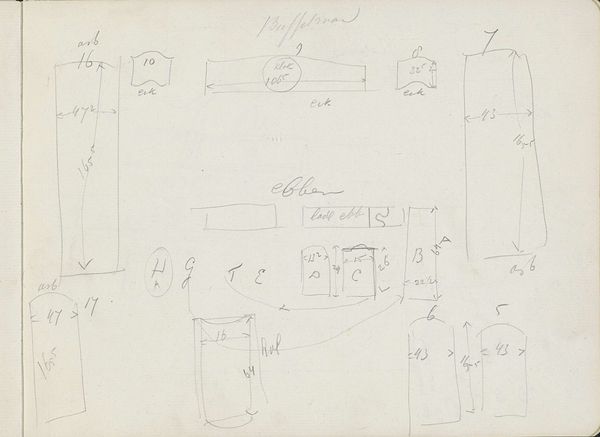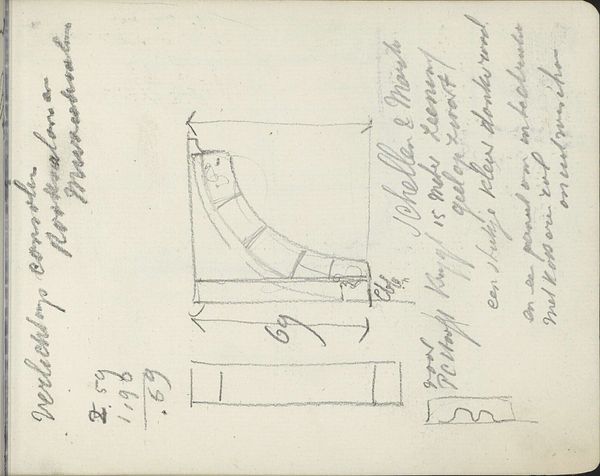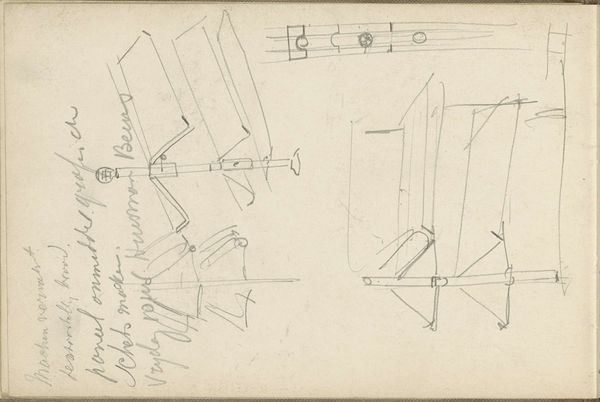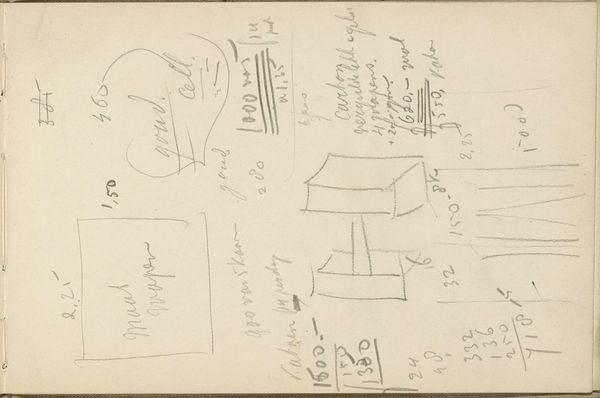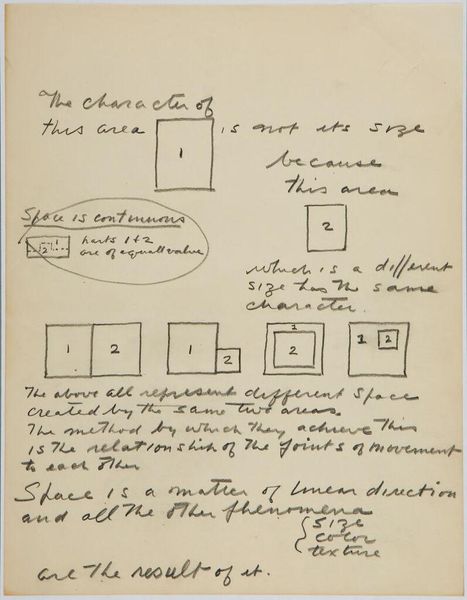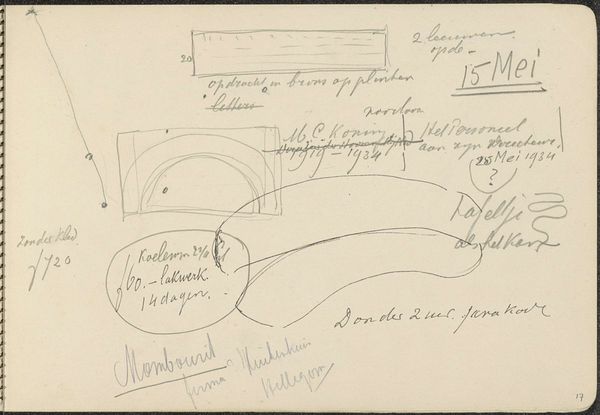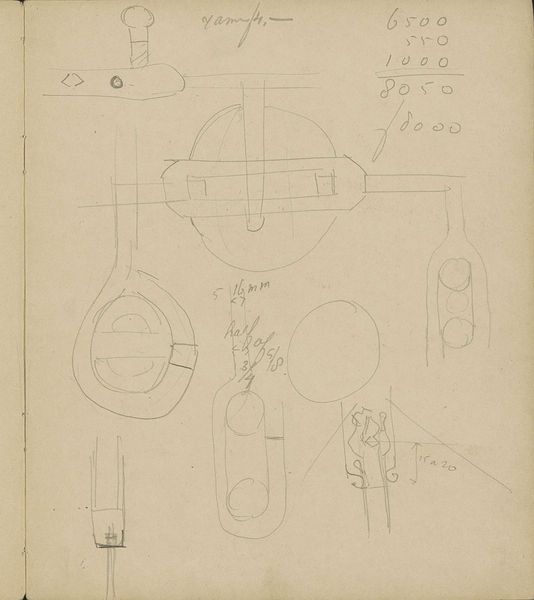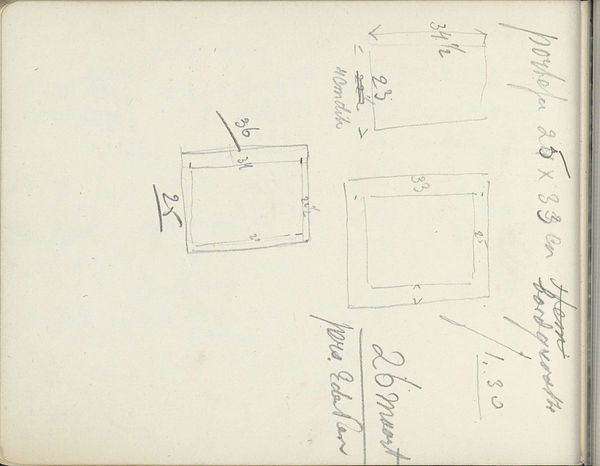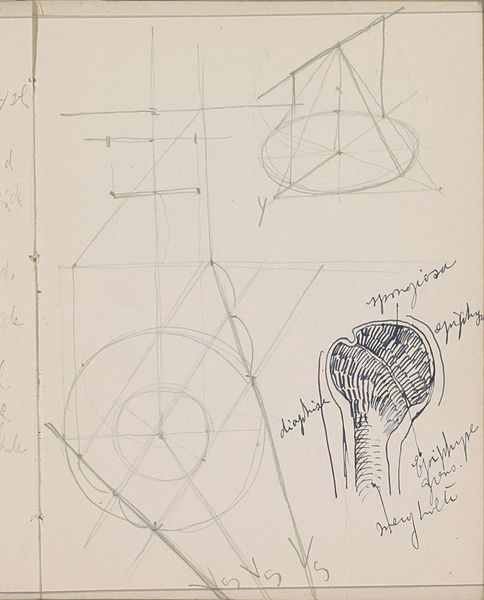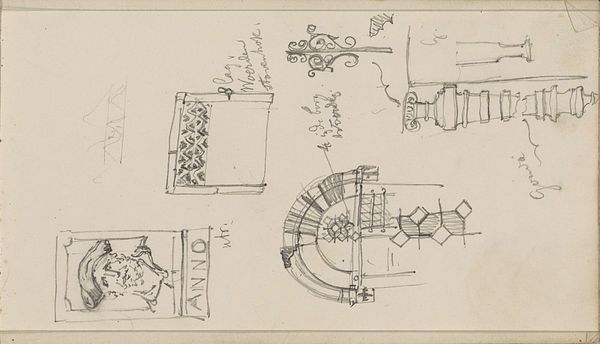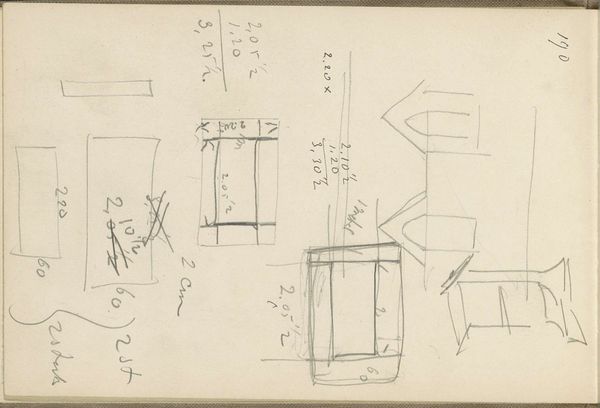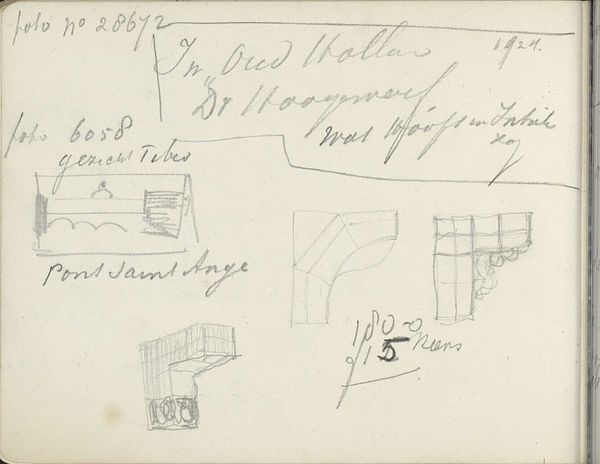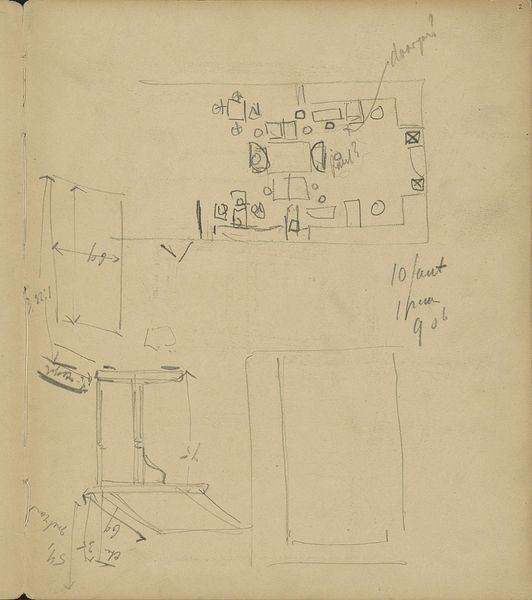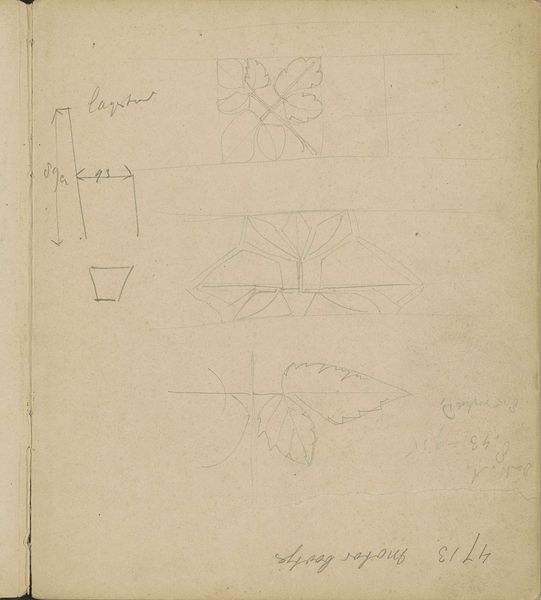
drawing, mixed-media, paper, pencil
#
drawing
#
mixed-media
#
hand written
#
script typography
#
hand-lettering
#
dutch-golden-age
#
hand drawn type
#
hand lettering
#
paper
#
personal sketchbook
#
hand-written
#
hand-drawn typeface
#
fading type
#
geometric
#
sketch
#
pencil
#
abstraction
#
cityscape
#
modernism
#
small lettering
Copyright: Rijks Museum: Open Domain
Editor: Here we have Carel Adolph Lion Cachet’s "Design for wall portraits in the smoking room," made around 1928, using mixed media, drawing, and pencil on paper. At first glance, it resembles an engineer's notebook page, with calculations and names scribbled down next to abstract shapes. How would you interpret this work in the context of its time? Curator: Considering the social context of the 1920s, especially with the rise of Modernism, this sketchbook page reveals several layers of meaning related to design, functionality, and social spaces. Smoking rooms were a symbol of bourgeois leisure and masculine identity. Cachet appears to be designing not just a portrait series, but defining a certain aesthetic and perhaps even reinforcing social hierarchies through art in that private space. Note the references to dimensions. Does this emphasize that art can define and shape social environments? Editor: That's a great point about social hierarchies. So, the geometric shapes, are those abstract portraits or more like placeholders for where portraits would go? Curator: A little of both, I believe. Cachet may have been working to integrate portraiture with modernist geometric abstraction, balancing individual identity with broader aesthetic trends. The sketches imply he was designing not just art, but atmosphere. Considering who these portraits were of, might reveal more about the intentions and cultural statement he aimed to make within that smoking room. The choice of lettering also shows deliberation in the aesthetic and contributes significantly to our perception. Editor: I see. The handwritten elements almost feel like a rejection of mass production, giving it a personal, intimate quality even within a formal setting. Curator: Exactly. By intertwining formal design with these human touches, Cachet blurred the boundaries between art, function, and individual expression, echoing broader debates about art’s role in a rapidly modernizing society. This blurring really emphasizes art as not merely decoration but social commentary. Editor: That's really insightful. I hadn’t considered how much a seemingly simple sketch could reflect those deeper societal conversations about class, design and modernity!
Comments
No comments
Be the first to comment and join the conversation on the ultimate creative platform.
